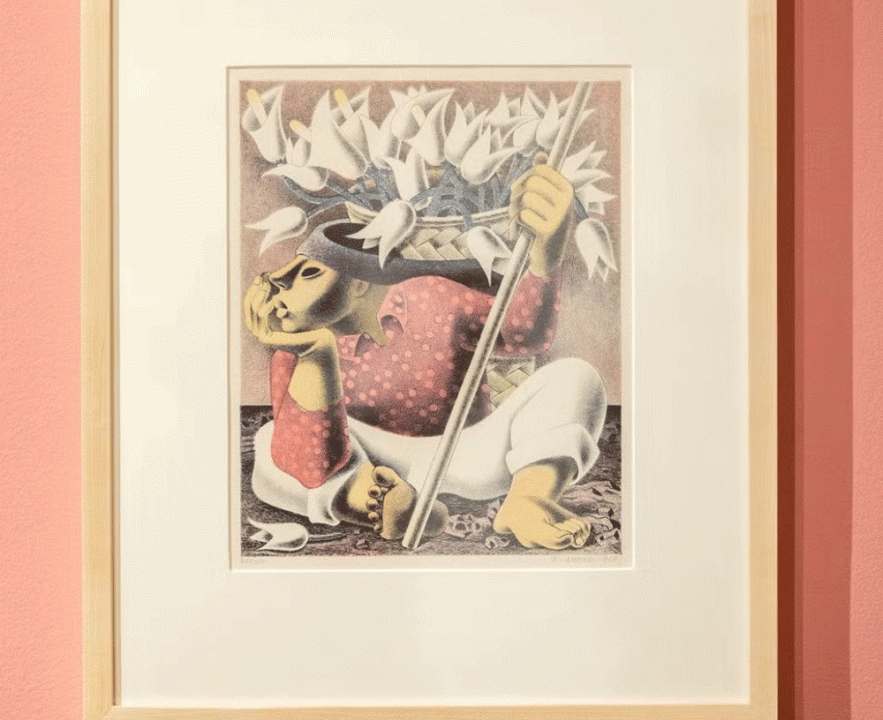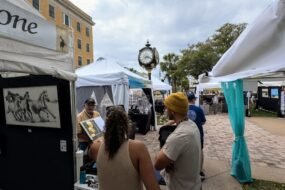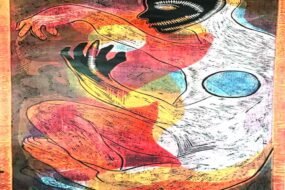

The graphic arts in Mexico have long carried both political urgency and aesthetic power. In the decades following the Mexican Revolution, artists embraced lithography, etching and linocut as direct, widely accessible forms of expression that engaged with issues of land reform, labor and social change.
Grounded in campesino life yet informed by modernist experimentation, the prints record the social concerns of 20th-century Mexico in ways that continue to resonate today.
“Mexican Prints: The Garcia-Correa Collection,” now on view at UC Santa Barbara’s Art, Design & Architecture Museum, presents 31 works drawn from a transformative gift of 61 prints.
The exhibit serves as both a celebration and a preview: a first look at a collection that will eventually be shown in fuller scope in the years ahead.
Curated by Ana Briz, the show highlights artists who played a central role in the Mexican printmaking movement, including José Clemente Orozco, David Alfaro Siqueiros, Rufino Tamayo, Leopoldo Méndez, Sarah Jiménez and Ignacio Aguirre.
Many were associated with the Taller de Gráfica Popular (People’s Graphic Workshop), one of the longest-running and most influential artist collectives of the 20th century.
“These artists were addressing agrarian reform, labor rights, women’s roles, domesticity and gender,” Briz said. “Even though the works were made decades ago, they resonate with current conversations about immigration and the conditions facing farmworkers, particularly here in California.”
The exhibition reflects a strong intergenerational aspect, both in its subject matter and in its origins.
The prints come from the collection of Gil Garcia, a longtime Santa Barbara civic leader, and Marti Correa de Garcia, originally from El Paso. The couple, active for decades in building cultural exchange and supporting Mexican art, gifted the works to the museum in 2025.
A centerpiece of the show is Ignacio Aguirre’s linocut of Emiliano Zapata, chosen as the exhibition poster. The high-contrast image depicts the revolutionary leader standing in a field of maize, a weapon in hand, evoking both his symbolic presence and the agrarian struggles of his time.
“It’s one of the most famous images of the movement,” Briz said. “The deep cuts, the stark contrasts, and the setting all point to the ideals Zapata represented.”
While many of the works share this bold, graphic clarity, the exhibition also explores variation in style and technique.
Prints by Emilio Amero, for example, employ color lithography to create a softer but no less pointed visual language. Briz described Amero as a particularly influential figure, both as an artist and as a teacher who mentored many of the artists represented in the exhibition.
His works “Vendedor de flores” (Flower Vendor) and “Muchacha peinándose” (Girl Combing Her Hair) are included, reflecting both his modernist aesthetic and his interest in everyday Mexican life.
The diversity of the works is a defining feature of the collection. Visitors encounter portraits, domestic interiors, agricultural landscapes, depictions of rituals and images of labor that together paint a broad picture of Mexican culture and modernism.
“That diversity is a point of connection for people,” Briz said. “Students may be struck by the boldness of the imagery, while others may find recognition in the subjects or themes.”
For Briz, the exhibition also reflects the way printmaking functioned as a tool of communication during a pivotal period in Mexican history. Prints could be produced quickly and distributed widely, allowing artists to comment on social issues in a direct, accessible form.
“The medium itself carried a social and political intent,” she said. “That’s why the movement has continued to influence artists across generations.”











